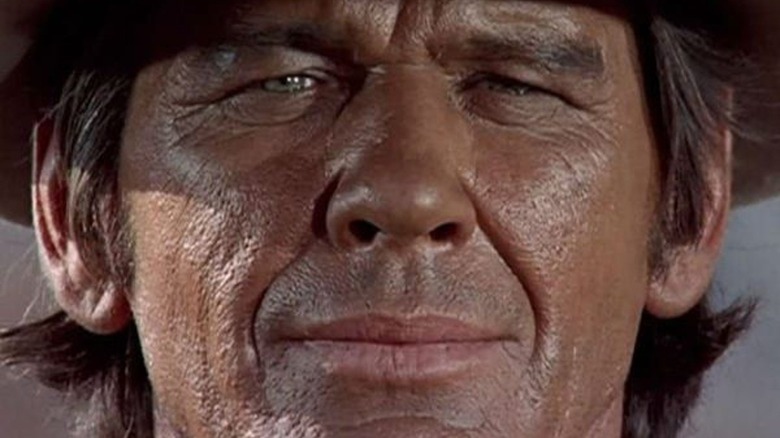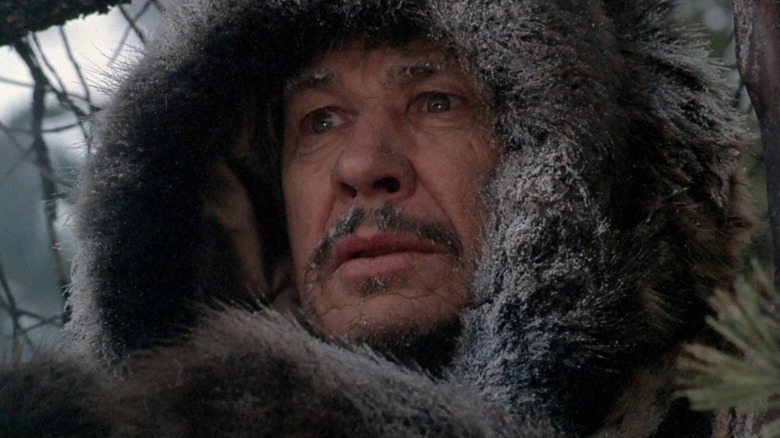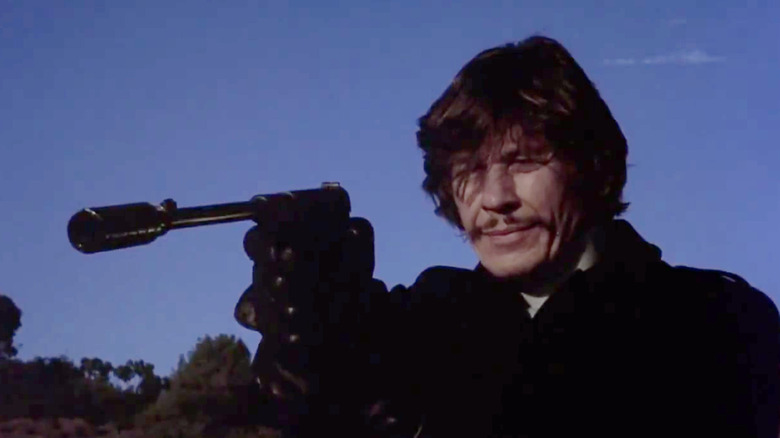Watching Charles Bronson Go From Movie Villain To Leading Man Left An Impression On Quentin Tarantino
We may receive a commission on purchases made from links.
Continuing to promote his first nonfiction book "Cinema Speculation," Quentin Tarantino has been given the opportunity to relive his formative years as an obsessive moviegoer. Although it's a much more detailed, refined piece of writing that's more in line with Pauline Kael's seminal compendium "I Lost it At the Movies," Tarantino's deep dive into the male-driven, violent movies of the 1970s maintains a spirit of film-geekery that's also reminiscent of Patton Oswalt's memoir "Silver Screen Fiend: Learning About Life from an Addiction to Film."
There's a fundamental, profound difference between being an inveterate cinephile and just being a causal movie fan that can go on about their lives right when the lights come up. For full-blooded cinephiles like Tarantino, a movie has the potential to fuse to your very DNA. It can become a part of you, especially at the malleable age that a young Quentin was when he first discovered R-rated movies and a roguish Charles Bronson.
But Tarantino was also heavily influenced by television, where the lead character was often upstaged by a cooler sidekick or a guest-starring role featuring a captivating antihero. Bronson, before he was a star, felt like one of those characters and Tarantino was instantly drawn to that. According to a new interview with Deadline, Tarantino was a young teen when he discovered the biography "Charles Bronson Superstar," a book that features a list of every movie Bronson ever did. He started crossing them off the list one-by-one, just as Oswalt writes about doing in "Silver Screen Fiend," with the exploitation guide "Psychotronic Encyclopedia to Film" by Michael Weldon.
Judging from the colorful collection of characters that Tarantino has created to date, it's not difficult to see how influential Bronson became to an impressionable teenager that would later become a revered auteur.
A 'no-nonsense attitude'
The 1970s emanated a steady vibe of breezy coolness that lionized smooth criminals like Bronson in "The Mechanic" or Steve McQueen in "The Getaway." When mainstream culture was worshipping McQueen's imitable style, Tarantino seemed more taken with Bronson's unique onscreen presence. "There's nobody that looked as cool as Charles Bronson in the '70s as far as I was concerned," Tarantino told Deadline. There was something else going on with Bronson, besides his "no-nonsense attitude," that Tarantino also picked up on. "He was also funny with his lines and had that cool way of talking. His movies were exciting, and he was just a really cool presence."
Looking even deeper, Tarantino touched on the types of characters he gravitated towards, which goes back to his younger days in front of the television. "Oftentimes, I'd be rooting for the villain," he explained. "I liked the villain more than the lead guy. Sometimes I'd like the sidekick more than the lead guy. It was more about the actor."
Slowly but surely, Bronson began to transition out of the villain role without ever losing that certain irresistible je ne sais quoi that Tarantino and so many other fans saw in him. That arc would eventually be seen in the roles Bronson chose, going from the victim to the avenger in "Death Wish" or moving from the hunter to the hunted in "Death Hunt," a defining role that was strikingly similar to Sylvester Stallone's portrayal of John Rambo in "First Blood."
Rooting for the villain
When Bronson made the leap to more heroic roles, Tarantino and fans of Bronson still noticed his bad side peeking through, an attribute that would continue to make his characters seem more complex than they really were. That edge Bronson walked on could go both ways, especially in earlier films like "The Mechanic" where Bronson's veteran hit man, Arthur Bishop, paints himself as more of an artist than a killer.
In Bronson, Tarantino may have found his ultimate muse. Or at least the male counterpart to Uma Thurman, the star of "Pulp Fiction" and main inspiration for The Bride in "Kill Bill." The bad guys are just more interesting, a fact Tarantino is well aware of, telling Deadline:
"Since I did find myself leaning more to the actors that were playing the bad guys, when Charles Bronson would come along, after a whole career playing bad guys and still looking like a movie villain even though he's the lead, I think that is part of the reason I was attracted so much to him."
There could be an entire book comparing characters like Mr. Blonde in "Reservoir Dogs," Hans Landa in "Inglourious Basterds," and Cliff Booth from "Once Upon a Time in Hollywood" to Bronson's most famous roles. Analyzing the more obscure, lesser known parts from Bronson's legendary career to look for hidden inspiration would be worth investigating, too, especially considering that Tarantino has likely seen every single one of them.


